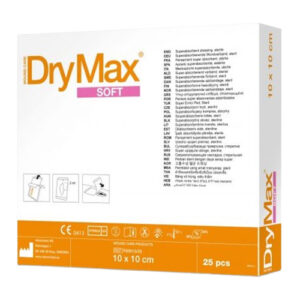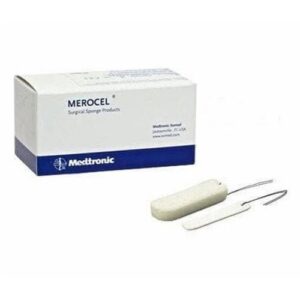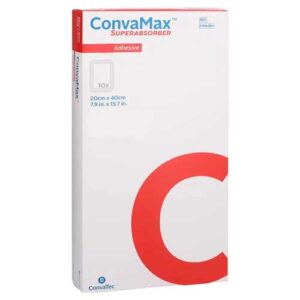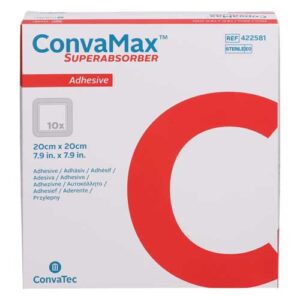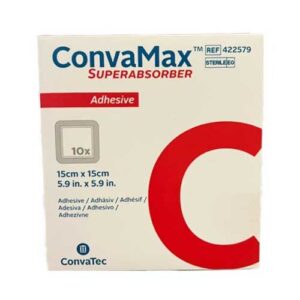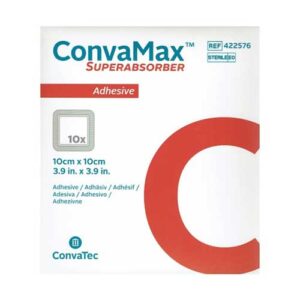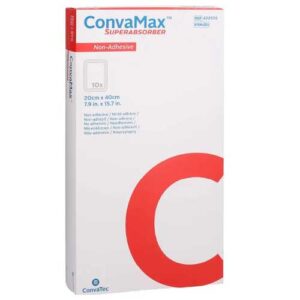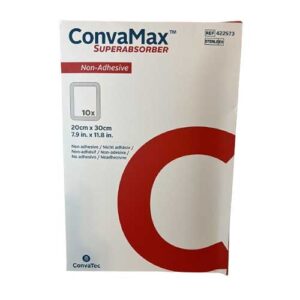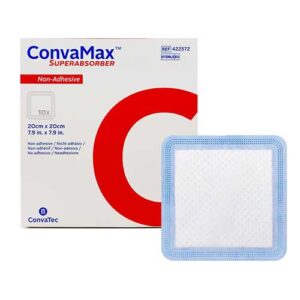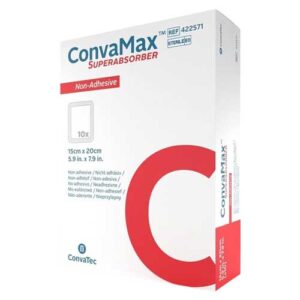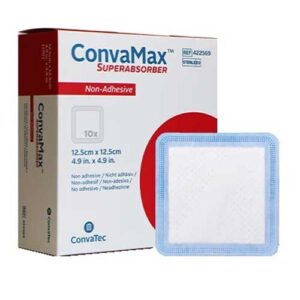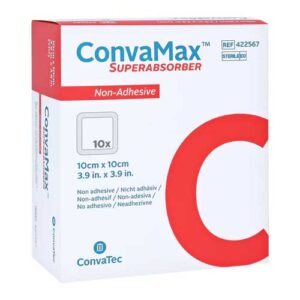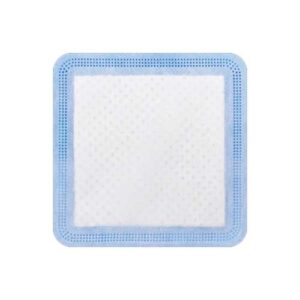Absorbent Dressing
Wound care requires more than just a dressing above the wound; it requires appropriate products for managing the healing. The very first factor of this process is choosing the right absorbent dressing.
These are applied so that they may ideally take excess exudate away, keeping the wound area clean and preserving an optimal healing environment. Without proper moisture control, complications can soon arise, such as infection or delayed recovery.
Absorbent dressings provide a safety and security measure in wound care handling and reduce the probability of infection, hence ensuring comfort. Options need to be explored, and an ideal should be chosen for each wound type.
Why Absorbent Dressings are Important for Wound Care?
Absorbent dressings are part of the management process carried out in wound healing. Exudate refers to the fluid produced by the body as part of the healing process. The accumulation of too much exudate may delay the healing process or cause infections and skin irritation.
During the healing process, absorbent dressings maintain a clean environment and keep the wound in an ideal condition. These dressings seal off the wound from any external contamination while keeping the exact amount of moisture that accelerates recovery.
Be it post-surgical wounds or injuries with intense fluid discharge, absorbent dressings should be required to prevent complications and allow the wound to heal efficiently and comfortably.
Types of Absorbent Dressings Available
There are different types of absorbent dressings that target particular kinds of wound care; the correct choice depends on the level of exudate of the wound.
- Foam Dressings: These are used for moderately to heavily exuding wounds. The soft and warm nature of these dressings provides a moist environment that aids in rapid healing. They also cushion the wound bed from further trauma.
- Alginate Dressings: Alginate dressings contain seaweed. They are best used with foul wounds as they are heavily exuding. Alginate dressings contain gel when they reach wound fluids.
- Hydrocolloid Dressings: Suitable for low to moderately exuding wounds. These dressings gel in contact with wound fluid; therefore, they promote moist wound healing.
- Composite Dressings: These are combined dressings that comprise various materials. The dressing is versatile in offering both protective cover and moisture management, both for those acute wounds that heal well and for those chronic wounds that heal poorly.
Benefits of Using Absorbent Dressings
Absorbent dressings can bring a lot of benefits to wound care. One of its greatest benefits is moisture control. Absorbent dressings limit the development of excess exudate, thus maintaining an optimal environment that is crucial for faster healing; this reduces both maceration and infections, which are major threats when wounds are exposed to too much fluid.
Furthermore, the absorbent dressings provide a protective cover which safeguards the wound from external allergies. They also help improve patient comfort, for most are designed to be soft with the skin and hypoallergenic, easy to put on and remove without hurting the wound.
Absorbent dressings work as a blessing in wound care-keeping the exudate under control, preventing infections, and speeding up healing. From a chronic wound to surgical preparation, the right dressing will make all the difference. Browse the available absorbent dressings to determine the best solution for your wound care needs, and begin today.
-
DryMax Soft Superabsorbent Dressing Sterile...
Please note that product image is for reference only and may not represent the exact product.
Ex. GST : $50.90Inc. GST : $55.99 -
DryMax Soft Superabsorbent Dressing Sterile...
Please note that product image is for reference only and may not represent the exact product.
Ex. GST : $23.65Inc. GST : $26.02 -
Biatain Superabsorber Non-Adhesive Dressing 25cmx45cm
Please note that product image is for reference only and may not represent the exact product.
Price : $14.05GST Free -
Biatain Superabsorber Non-Adhesive Dressing 20cmx30cm
Please note that product image is for reference only and may not represent the exact product.
Price : $13.15GST Free -
Biatain Superabsorber Non-Adhesive Dressing 20cmx25cm
Please note that product image is for reference only and may not represent the exact product.
Price : $11.60GST Free -
Biatain Superabsorber Non-Adhesive Dressing 15cmx15cm
Please note that product image is for reference only and may not represent the exact product.
Price : $8.50GST Free -
Biatain Superabsorber Non-Adhesive Dressing 10cmx20cm
Please note that product image is for reference only and may not represent the exact product.
Price : $6.50GST Free -
Biatain Superabsorber Non-Adhesive Dressing 10cmx10cm
Please note that product image is for reference only and may not represent the exact product.
Price : $5.25GST Free -
Cutimed Sorbion Sachet Multi Star...
Please note that product image is for reference only and may not represent the exact product.
Ex. GST : $77.15Inc. GST : $84.87 -
Cutimed Sorbion Sachet S Superabsorbent...
Please note that product image is for reference only and may not represent the exact product.
Ex. GST : $116.70Inc. GST : $128.37 -
Cutimed Sorbion Sachet S Superabsorbent...
Please note that product image is for reference only and may not represent the exact product.
Ex. GST : $64.85Inc. GST : $71.34 -
Cutimed Sorbion Sachet S Superabsorbent...
Please note that product image is for reference only and may not represent the exact product.
Ex. GST : $49.80Inc. GST : $54.78 -
DryMax Soft Superabsorbent Dressing Sterile...
Please note that product image is for reference only and may not represent the exact product.
Ex. GST : $21.45Inc. GST : $23.60 -
DryMax Extra Soft Superabsorbent Dressing...
Please note that product image is for reference only and may not represent the exact product.
Ex. GST : $48.00Inc. GST : $52.80 -
Ex. GST : $119.70Inc. GST : $131.67
-
Ex. GST : $96.30Inc. GST : $105.93
-
Ex. GST : $23.40Inc. GST : $25.74
-
Ex. GST : $18.60Inc. GST : $20.46
-
Merocel HemoX Standard Nasal Dressing...
Please note that product image is for reference only and may not represent the exact product.
Ex. GST : $293.85Inc. GST : $323.24 -
ConvaMax Superabsorber Adhesive 20 x...
Please note that product image is for reference only and may not represent the exact product.
Price : $20.05GST Free -
ConvaMax Superabsorber Adhesive 20 x...
This product: No Refund, No Credit, No Exchange.
Expiry Date: 1 Aug 2025
*Product available till stock last.
Please note that product image is for reference only and may not represent the exact product.
$19.70$11.80 Save % -
ConvaMax Superabsorber Adhesive 15 x...
This product: No Refund, No Credit, No Exchange.
Expiry Date: 1 Aug 2025
*Product available till stock last.
Please note that product image is for reference only and may not represent the exact product.
$8.30$4.95 Save % -
ConvaMax Superabsorber Adhesive 10 x...
Please note that product image is for reference only and may not represent the exact product.
Price : $4.65GST Free -
ConvaMax Superabsorber Non-adhesive 20 x...
Please note that product image is for reference only and may not represent the exact product.
Price : $22.65GST Free -
ConvaMax Superabsorber Non-adhesive 20 x...
This product: No Refund, No Credit, No Exchange.
Expiry Date: 1 Aug 2025
*Product available till stock last.
Please note that product image is for reference only and may not represent the exact product.
$9.35$5.60 Save % -
ConvaMax Superabsorber Non-adhesive 20 x...
Please note that product image is for reference only and may not represent the exact product.
Price : $4.10GST Free -
ConvaMax Superabsorber Non-adhesive 15 x...
This product: No Refund, No Credit, No Exchange.
Expiry Date: 1 Aug 2025
*Product available till stock last.
Please note that product image is for reference only and may not represent the exact product.
$2.80$1.70 Save % -
ConvaMax Superabsorber Non-adhesive 12.5 x...
Please note that product image is for reference only and may not represent the exact product.
Price : $2.30GST Free -
ConvaMax Superabsorber Non-adhesive 10 x...
This product: No Refund, No Credit, No Exchange.
Expiry Date: 1 Aug 2025
*Product available till stock last.
Please note that product image is for reference only and may not represent the exact product.
$2.60$1.55 Save % -
ConvaMax Superabsorber Non-adhesive 10 x...
Please note that product image is for reference only and may not represent the exact product.
Price : $1.90GST Free -
ConvaMax Superabsorber Non-adhesive 7.5 x...
This product: No Refund, No Credit, No Exchange.
Expiry Date: 1 Aug 2025
*Product available till stock last.
Please note that product image is for reference only and may not represent the exact product.
$2.15$1.30 Save % -
Universal Multi-Trauma Dressings– Large 20cm...
Please note that product image is for reference only and may not represent the exact product.
Ex. GST : $4.20Inc. GST : $4.62 -
Ex. GST : $5.00Inc. GST : $5.50
-
Ex. GST : $4.70Inc. GST : $5.17
-
Ex. GST : $2.50Inc. GST : $2.75
-
Ex. GST : $2.10Inc. GST : $2.31

